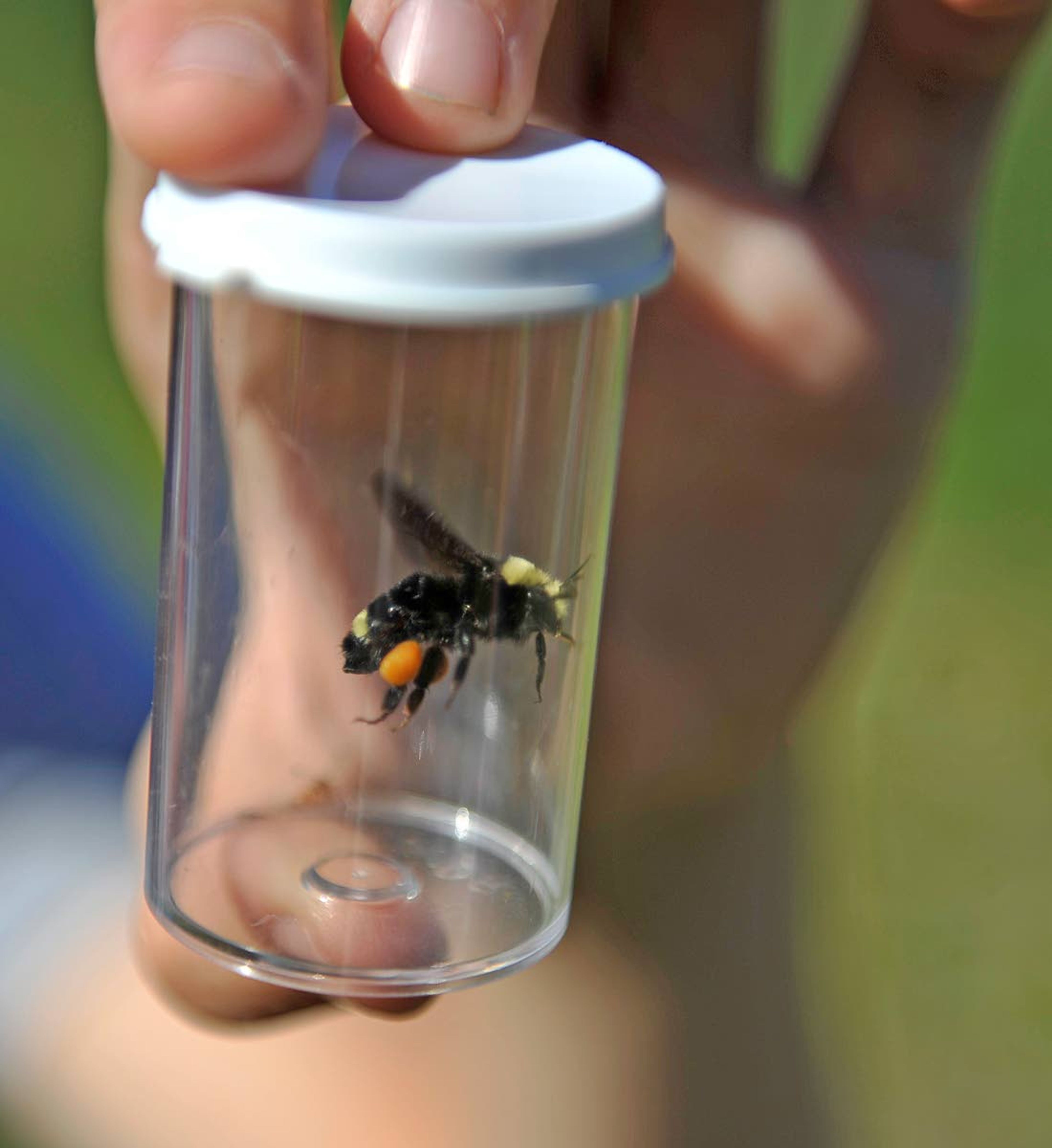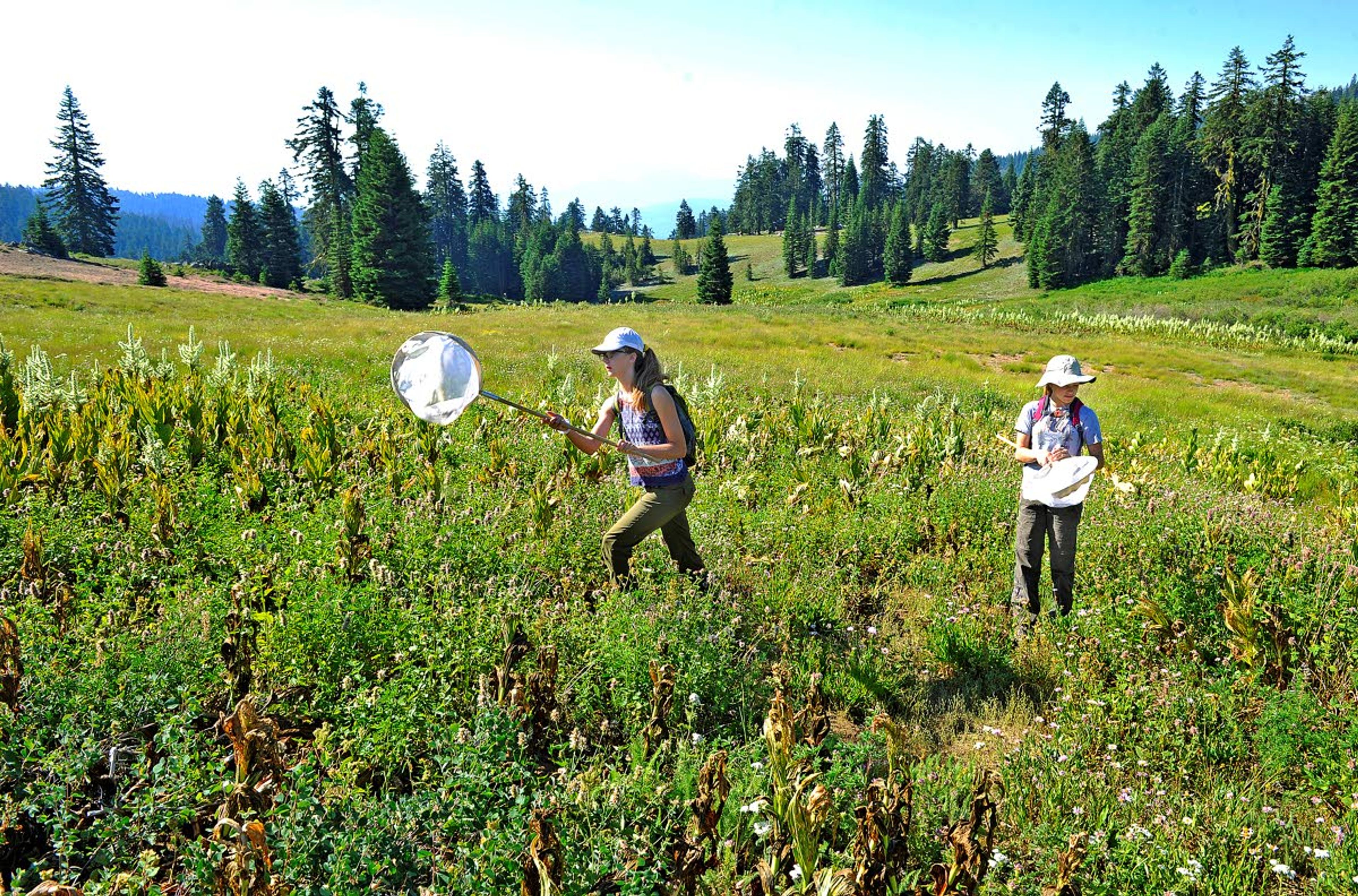MEDFORD, Ore. — The bee has a black back but is without a yellow face. Could it be a Franklin’s bumblebee, which hasn’t been seen in these parts since 2006?
Vladu quickly nets the bee and channels her two days of bee-wrangling experience to get the little bugger into a plastic canister.
“Nope, I can tell it’s not a Franklin’s,” Vladu says. “It’s just a cuckoo.”
Finding this near lookalike while searching for a rare Franklin’s bumblebee is much like a false celebrity sighting: You think you spy Johnny Depp, but he turns out to be just another transient. So go the ups and downs of an annual survey in which citizen scientists take to the flowery meadows of Mount Ashland in search of everything bumblebee, with a particular eye toward the Franklin’s bumblebee, which hasn’t been seen here for a dozen years.
First identified in 1921, Franklin’s bumblebees were once so numerous that backyard gardeners in Medford and Ashland used to see them slurping pollen on their flowers.
They have the smallest range of any bumblebee in North America, found only from Sutherlin south to the Mount Shasta area and between the Cascades and Coast mountain ranges.
They are now a candidate for protection under the federal Endangered Species Act, and the U.S. Fish and Wildlife Service has come to the Rogue River-Siskiyou National Forest in search of them in high-mountain meadows that teem with wildflowers in midsummer.
“It’s a population decline and not a range decline,” said Jeff Dillon, a FWS biologist coordinating the surveys, which included two days on Mount Ashland, with separate forays to the Hobart Bluff and Grizzly Peak areas.
The last sighting was 2006 along the edge of the Mount Ashland Ski Area by Dr. Robbin Thorp, a now-retired University of California-Davis professor who has chased these bees for decades.
Possible reasons for the decline include competition from other bumblebees, viruses and pesticides, Dillon says.
“That’s what we’re trying to figure out,” he says.
Some of the data used to figure out the status of the Franklin’s bumblebee comes from this annual survey, in which interested members of the public and other wildlife-related government agencies pick up nets and get a quick tutorial on bee-catching and identification.
Plying the wildflowers, participants come across dozens of bumblebees and swoop them with the nets. The bees are then herded into canisters so they can be identified.
The most common bee on Mount Ashland is the yellow-faced bumblebee, with its bright yellow face, black body and a single yellow band on its torso.
“Is this a Franklin’s? I’m not thinking it is,” says Vladu, a 20-year-old Virginia college student interning this summer with the federal Natural Resources Conservation Service office in Central Point.
Turns out none of the bees captured this summer are Franklin’s bumblebees.
“Just another cuckoo,” Vladu said.
But just another cuckoo is like saying just another apiarian Attila the Hun.
When queen cuckoos hatch, they don’t fly off to set up their own hive like other bumblebees that rely on spaces such as vacated gopher holes to start building their catacombs.
Cuckoo queens seek out an existing hive — any hive, not just that of another cuckoo — then go in to fight the queen for the right to take over the nest and enslave the worker bees for her own desires.
“It’s queen against queen, and the cuckoo doesn’t always win,” Dillon said.
Female cuckoos are well preened and pack a potent stinger. Males are generally unkempt and possess no stinger, though they will act as if they are stinging, Dillon said.
Vladu’s cuckoo definitely possesses a stinger, and its constant buzzing indicates it is unhappy about its plastic environs.
When Vladu unsnaps the canister lid, the cuckoo shows no signs of Hun-like behavior and flies docilely away.
“They seem pretty amicable,” Vladu said. “They just fly away.
“But then again, I’ve only been doing this for one day,” she said.










